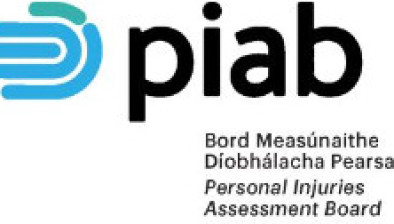High Court: €60,000 awarded under new guidelines for girl suffering from moderate PTSD and minor white scar on thigh

The High Court has awarded €60,000 in damages to a girl who suffered from moderate PTSD and who received a white scar on her thigh from a road traffic accident. The case was notable as it was one of the first cases in which a court was required to apply the new Personal Injuries Guidelines which came into effect in April 2021.

About this case:
- Citation:[2022] IEHC 452
- Judgment:
- Court:High Court
- Judge:Mr Justice Paul Coffey
Delivering judgment in the case, Mr Justice Paul Coffey outlined the procedure for assessing a plaintiff’s injuries and the proper categorisation of the plaintiff’s injuries under the Guidelines. Although the plaintiff’s PTSD injury was moderate, the court awarded €35,000 for this injury, being the upper limit of the “moderate PTSD” category.
Background
In December 2019, the plaintiff was 14 years old and making her way to school. As she crossed the road, she was hit by the defendant’s car. The accident caused the plaintiff to fall onto a grass verge adjacent to the footpath.
It was not disputed that the plaintiff suffered psychological injury from the accident in the form of post-traumatic stress disorder (PTSD). It was also agreed that the plaintiff suffered minor physical injuries, which included an abrasion to her upper left thigh which resulted in a 12cm white scar. There were also soft tissue injuries such as a left wrist sprain and bruising.
The dominant injury to the plaintiff was the PTSD injury which affected her for many months following the accident. In particular, the plaintiff suffered from nightmares, flashbacks, panic attacks, poor concentration and demotivation at school with a decline in performance. She also had recurring thoughts of self-harm which led to the plaintiff cutting herself.
The plaintiff received counselling but would require more counselling in future. The expert evidence stated that the plaintiff was mildly symptomatic at the time of trial and progressing towards recovery.
The primary issue at trial was the assessment of the plaintiff’s injuries under the Guidelines. The plaintiff submitted that the PTSD injuries straddled the two categories of moderate PTSD and serious PTSD. The moderate PTSD category ranged from €10,000 to €35,000 while the serious PTSD category ranged from €35,000 to €80,000. It was suggested that the value of the injury was between €40,000 and €50,000.
The defendant contended that the plaintiff’s injury plainly fell within the moderate PTSD category and submitted that the injury should be valued at €20,000.
High Court
Mr Justice Coffey began by considering the procedure set out in the Guidelines for the assessment of injuries. It was noted that the court should ask each party for submissions on the dominant injury at the conclusion of evidence and to identify the damages bracket into which the injuries fell. In light of a court’s findings of fact on the injuries, the court must consider how the Guidelines impact an award of damages.
It was also noted that a court may depart from the Guidelines if the justice of the case requires and must state rational reasons for doing so. This could arise where a strict application of the classifications of injury would leave a plaintiff under-compensated for their injuries, although this was unlikely to arise in straightforward cases.
For cases involving multiple injuries, it was noted that a court should identify the categorisation for the most significant of the injuries and then provide an “uplift” to compensate the plaintiff for the other, lesser injuries.
Next, Mr Justice Coffey considered the proper categorisation of the plaintiff’s PTSD injury. It was noted that serious PTSD was defined as “a category (that is) distinct from (Severe PTSD) because of a prognosis projecting some recovery with professional help. However, the effects are still likely to cause significant disability for the foreseeable future”. The moderate PTSD category stated that “the injured person will have largely recovered, and any continuing effects will not be grossly disabling”.
It was held that the plaintiff’s PTSD was persistent for a relatively short but important time in the plaintiff’s life and was severely disabling. Further, the PTSD would continue to be potentially serious for the plaintiff insofar as she had become demotivated at school. She had gone from being an A student to a D student during this time. However, the court also noted that it did not have contextual evidence from the plaintiff’s teachers who could indicate if the educational difficulties were likely to continue.
Having regard to the evidence, the court was satisfied that the plaintiff’s PTSD fell into the moderate category. However, to take account of the effects on the plaintiff’s life, and particularly the potential adverse effects to the plaintiff’s Leaving Certificate, the court awarded damages at the top end of the category, being €35,000.
In relation to the plaintiff’s scar, it was noted that the scar was 12cm long and 2cm wide just below the buttock. The scar had settled to being white and pale, but could not be removed by surgery. The court held that the scar was a minor cosmetic injury which was not particularly distinct. However, the court noted that the plaintiff considered the scar to be a significant disfigurement and caused her to cover it up constantly.
To take account for the scar and the other minor injuries suffered by the plaintiff, the court applied an uplift of €25,000 to the overall damages award.
Conclusion
The court awarded €60,000 in general damages to the plaintiff for the injuries, plus €1,200 in special damages which were agreed.
Lipinski (A Minor) v. Whelan [2022] IEHC 452









